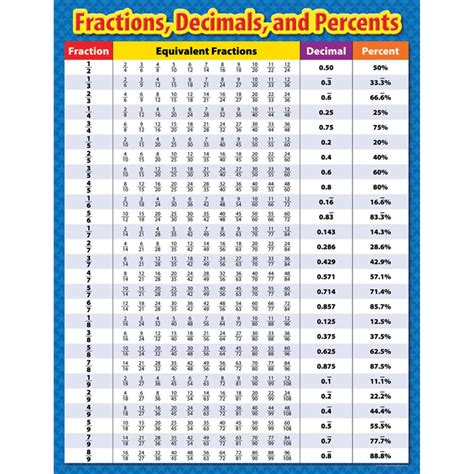What Percent Of 6 Is 4
Kalali
Apr 02, 2025 · 4 min read

Table of Contents
What Percent of 6 is 4? A Deep Dive into Percentage Calculations
Understanding percentages is a fundamental skill applicable across various aspects of life, from calculating discounts and taxes to comprehending statistical data and financial reports. This article will delve into the seemingly simple question, "What percent of 6 is 4?", and will explore not only the solution but also the underlying concepts, different methods for calculating percentages, and real-world applications. We'll also touch upon advanced concepts and address common misconceptions.
Understanding the Fundamentals of Percentages
A percentage is simply a fraction expressed as a number out of 100. The symbol "%" represents "per cent" or "out of 100." For example, 50% means 50 out of 100, which is equivalent to the fraction 50/100 or the decimal 0.5.
The core concept revolves around the relationship between three key elements:
- The Part: This represents a portion of the whole. In our example, "4" is the part.
- The Whole: This represents the total amount or the complete quantity. In our example, "6" is the whole.
- The Percentage: This expresses the part as a fraction of the whole, represented as a number out of 100. This is what we need to calculate.
Calculating "What Percent of 6 is 4?"
There are several methods to solve this problem. Let's explore the most common and efficient approaches:
Method 1: Using Proportions
This method leverages the concept of equivalent ratios. We can set up a proportion:
x/100 = 4/6
Where 'x' represents the percentage we're trying to find. To solve for 'x', we cross-multiply:
6x = 400
Then, divide both sides by 6:
x = 400/6 = 66.67 (approximately)
Therefore, 4 is approximately 66.67% of 6.
Method 2: Using Decimals
This method involves first calculating the decimal representation of the fraction and then converting it to a percentage.
- Find the decimal: Divide the part by the whole: 4/6 = 0.6667 (approximately)
- Convert to percentage: Multiply the decimal by 100: 0.6667 * 100 = 66.67%
This method yields the same result: approximately 66.67%.
Method 3: Using the Percentage Formula
The general formula for calculating percentages is:
(Part / Whole) * 100 = Percentage
Substituting our values:
(4 / 6) * 100 = 66.67%
This method directly applies the fundamental percentage calculation, providing a clear and straightforward approach.
Rounding and Precision
Notice that in all methods, we obtain a result of approximately 66.67%. The recurring decimal (0.666...) means we need to round the result for practical purposes. The level of precision required depends on the context. In some cases, rounding to the nearest whole number (67%) might suffice, while in others, more decimal places might be necessary for accuracy.
Real-World Applications
Understanding percentage calculations is crucial in numerous real-world scenarios:
- Sales and Discounts: Calculating discounts offered on products during sales events. For example, a 20% discount on a $100 item means a saving of $20.
- Taxes and Interest: Determining the amount of tax or interest payable on loans, investments, or purchases.
- Financial Analysis: Interpreting financial statements, evaluating investment returns, and understanding profit margins.
- Statistics and Data Analysis: Representing proportions and distributions in data sets, enabling comparisons and interpretations.
- Scientific Experiments: Expressing experimental results, analyzing data, and reporting findings.
Advanced Concepts and Misconceptions
While the basic percentage calculations are relatively straightforward, some advanced concepts and common misconceptions deserve attention:
- Percentage Increase/Decrease: Calculating the percentage change between two values requires understanding the difference between the initial and final values relative to the initial value.
- Compound Interest: This involves calculating interest on both the principal amount and accumulated interest over time.
- Percentage Points: This term is often misused. Percentage points refer to the absolute difference between two percentages, not the relative percentage change. For example, a change from 10% to 15% is a 5 percentage point increase, not a 50% increase.
Practical Exercises
To solidify your understanding, consider these practice problems:
- What percent of 15 is 9?
- What is 30% of 80?
- If a shirt costs $50 and is discounted by 15%, what is the final price?
- A student scored 85 out of 100 on a test. What percentage did they score?
- If the population of a city increased from 10,000 to 12,000, what is the percentage increase?
By working through these exercises, you can reinforce your grasp of percentage calculations and their practical applications. Remember that consistent practice is key to mastering this fundamental mathematical concept.
Conclusion
Calculating percentages is a vital skill with broad applicability. The question, "What percent of 6 is 4?" provides a simple yet effective illustration of the underlying principles and methods involved in these calculations. Understanding the different approaches, appreciating the nuances of rounding and precision, and being aware of common misconceptions will empower you to tackle more complex percentage-related problems confidently in diverse real-world situations. Remember to practice regularly and apply your knowledge to reinforce your understanding. Mastering percentages will significantly enhance your analytical abilities and overall problem-solving skills.
Latest Posts
Latest Posts
-
64 Oz Is How Many Cups
Apr 03, 2025
-
Are Humans Cold Blooded Or Hot Blooded
Apr 03, 2025
-
400 Degrees Fahrenheit Is How Many Degrees Celsius
Apr 03, 2025
-
How Many Seconds In 2 Minutes
Apr 03, 2025
-
What Is 170 Cm In Inches
Apr 03, 2025
Related Post
Thank you for visiting our website which covers about What Percent Of 6 Is 4 . We hope the information provided has been useful to you. Feel free to contact us if you have any questions or need further assistance. See you next time and don't miss to bookmark.
